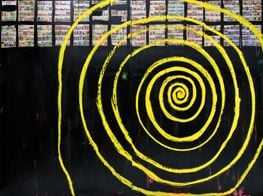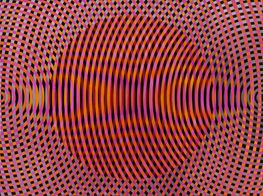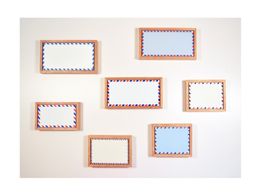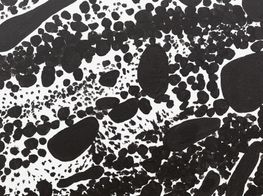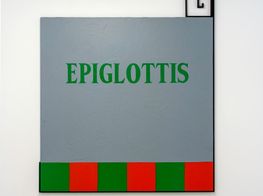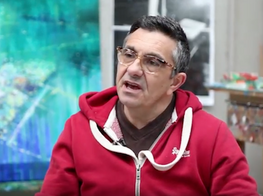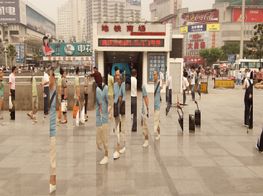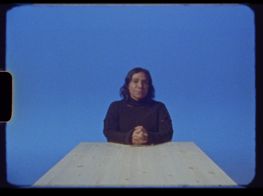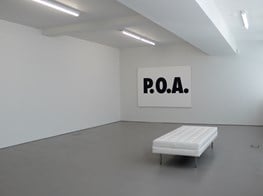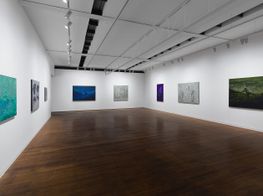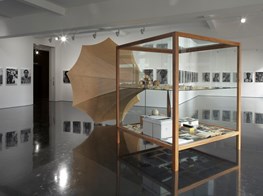Melbourne Now
For a city consistently referred to as Australia’s ‘cultural capital’ Melbourne’s National Gallery of Victoria (NGV) has had a track record of casual disregard for the vigorous cultural activities that have been occurring in its midst. It has seemed odd at best, that despite healthy acquisitions of contemporary Australian art, the NGV consistently relegated these works to storage, instead favouring buy-in blockbusters or solo exhibitions by international artists in place of works by living contemporary Australian artists. Fortunately, thanks to new NGV Director, Tony Ellwood’s visionary leadership and some timely curatorial appointments, this wrong has been righted in a spectacular fashion.
Melbourne Now features over 250 commissions undertaken by more than 400 artists, architects, industrial designers, jewellery and fashion designers and even bespoke shoemakers. It covers over 8,000 square meters of exhibition space sprawling across both the National Gallery of Victoria: International on St Kilda Rd and the Ian Potter Centre: NGV Australia situated in Federation Square. Melbourne Now is the largest exhibition ever undertaken in the NGV’s 150 year history. And it was created in just over one year.
Whilst the rapidity of its development could indicate some kind of desperate programming bungle, and the proudly local focus could be seen as parochial, the exhibition instead transcends such criticisms and speaks of an enthusiasm finally unleashed. Wrestling beneath the vast celebratory network of projects and commissions is a community so vibrant and dynamic that it is home to three major art publications, not to mention the countless artist-run-spaces, contemporary art spaces, collectives, project spaces, off-site projects, and initiatives and organsiations in every shape and form of the cultural spectrum, all of whom call Melbourne home. For Melbourne Now this mass of activity was corralled by two key driving curatorial motivations or thematics that managed to present a relatively coherent indication of Melbourne’s myriad cultural activities.
Firstly, the exhibition tracked a kind of circular city feedback loop, whereby many of the works focused on the impact that a city has on its cultural practitioners, and in return what influence do artists and makers have on a city’s fabric and feel. Whilst this idea was explored in earnest throughout the architecture and design components of Melbourne Now - curated by Fleur Watson from RMIT’s award-winning new Design Hub - references to the city and its intersections with the body, were present in much of the artwork as well.
Bianca Hester’s Hoops: sound tests, performances, documents (2011–13), 2013 was a notable example. In this work she charts research conducted over three years whereby steel hoops are rolled through urban spaces, with their trajectory, sound and gesture analysed and recorded. These performative experiments test the possibility for irregular behaviour within urban spaces, considering the hoop as a stand-in for human will and the meandering subjective passages traversed by commuters that may run counter to the prescribed behaviour expected by urban planners and civic architects.
Likewise Bridie Lunney’s work tests the relationships between the corporeal body and the hard reality of the built environment. Considering the body as a conduit between emotional states and the outside world, Lunney situated her durational performances alongside props and a large tiled wall construction, employing a choreographed series of instructions. In this work performers enacted gestures that both mimic the solidity of architecture, whilst simultaneously undermining it by forcing collisions and equivalencies between the emotional connotations of the body and the angular, instructive materiality of architectural spaces.
Perhaps a more literal investigation of the fabric of the city and the impact that artists make upon it is the ALLYOURWALLSPROJECT organized by Land of Sunshine and Invurt in association with the National Gallery of Victoria and Hosier Inc. This project featured a painting over of Melbourne’s most famous lane way, Hosier Lane, which has since the 1990s been the most prominent site for street artists to exhibit their work. Having painted over the decades-old layers of graffiti, the organizers then commissioned a new conglomeration of works by some of the world’s finest street artists and graffiti crews – resulting in a spruced up display representing a sanctioned, slice of current Melbourne street art.
The second thread in the exhibition’s curatorial logic was a more strategic one that seemed to draw from Ellwood’s previously successful tool box for contemporary projects: the commissioning of works that invite awe or interaction, mixed with lively children’s programming. These elements, which were used to great effect during Elwood’s previous Directorship at the Queensland Art Gallery, have proven to be effective methods to boost audience numbers, and therefore increase the relevance of large cultural institutions. In this context, Ellwood’s modus operandi is not to be considered as cynical as it sounds. Rather than being a clinical marketing strategy, this desire to “create an exhibition that offers opportunities for direct engagement” has been mostly achieved through a playful, open and comparatively radical approach.
Among the suite of activities and events on offer as part of Melbourne Now are a Children’s Festival featuring performances, commissions, workshops and games, a contemporary dance program, lectures and talks, workshops and a comprehensive education programme catering to all levels of engagement.
Despite the actual exhibition featuring several clunky curatorial manoeuvres and a handful of awkward groupings, there is no denying that the NGV has opened itself to new ways of working in an unprecedented way with Melbourne Now. Several of the commissions feature a recontextualisation of the NGV’s collection, including Patrick Pound’s outstanding work The gallery of air, 2013, which is a contemporary wunderkammer of works of art and objects from both the NGV collection and the artist’s own, that feature in some way the idea of ‘air’. This poetic and hilarious collection of objects range from Old Master paintings featuring wind, to photographs of fans and planes, vacuum cleaners and even a caricature from Gone with the Wind. This work undermines the traditional imprimatur of the NGV’s collection through its witty enquiry into the subject of nothingness, and is a welcome break in the NGV’s recent procession of rather tired curatorial classics.
This is also the case with the inclusion of edible works by the Hotham Street Ladies. This conservator’s nightmare was created by a group of women who shared a house together in the late 1990s to mid 2000s in Melbourne and who have been collaborating on art projects ever since. The works are predominantly domestic in origin including cake baking, embroidery and ironic domestic sculpture. For this major commission the Hotham Street Ladies have used cake icing to recreate the debris from a vast dinner party, the hall runner from their flat and their entire living room.
One of the most telling, and perhaps most successful works that encouraged direct participation was Nick Selenitsch’s remarkable room of pointless, joyous games. Entitled The Tactile Subject, 2013 Selenitsch merges the language of Geometric Abstraction and Colour Field Abstraction with sporting motifs, creating a playful environment where the viewer is invited to hurl balls and scrunched-up paper at unknowable targets. This installation establishes a kind of level playing field, where every viewer has an equal opportunity to make their own meaning through their decision to participate or not. Not only does Selenitsch’s installation undermine the goal-orientated nature of sports and life, opting instead for an open participatory approach, but it also invites a similarly active mode when viewing the exhibition as a whole. Like Selenitsch’s installation, Melbourne Now does not ask a particular question nor imply a single correct answer, it does not claim to represent an unquestionable truth nor a scholarly perspective, instead the exhibition is simply a celebration of prolific creative activity, inviting everyone to play in this game which seemingly has no rules.



